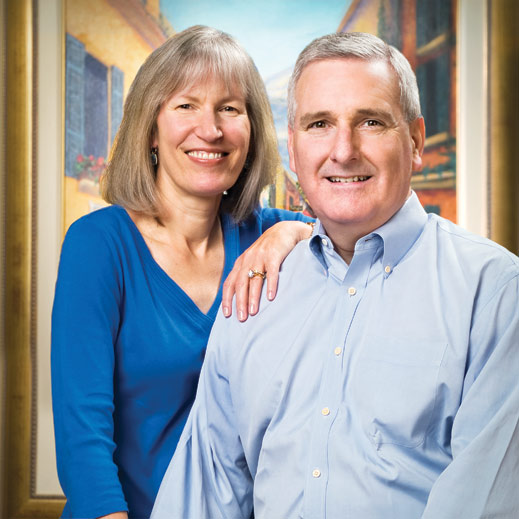John founded Personalis, a leader in human genome interpretation, and was CEO of Solexa, which develops breakthrough technology in next-generation DNA sequencing. He earned a bachelor’s degree in nuclear science and engineering in 1978, a master’s in mechanical engineering in 1980, and an MBA in finance from the Wharton School at the University of Pennsylvania in 1988. He is one of four students responsible for the famous hack at the Harvard-Yale game, when a weather balloon marked “MIT” inflated at the 46-yard line. John and Judy have been married for 31 years and have traveled to 45 countries.

“We’ve made a series of unrestricted gifts to MIT. We’re 3,000 miles away and believe that MIT’s leadership knows better than we do how to spend the money, so we don’t want to be prescriptive. People at MIT are going to be successful developing renewable energy, advancing the medical field, or finding cures for cancer, but it’s going to be tough to do that if you can’t find a parking place. In addition to funding exciting headline projects, at some point MIT will need a new parking facility, somebody to fix the boiler, or perhaps uninteresting infrastructure elements; otherwise, people can’t take on the big ideas. Our sense is that in addition to exciting architecture, a new building also needs a foundation. We’re confident that if we fund that, MIT will build the great building. General support is a vote of confidence in MIT’s management. We know they know what they’re doing. They just need the funds to get on with doing it.”
Please consider your own unrestricted gift to MIT.
For information, contact Rob Scott: 617-253-3394; rscott@mit.edu. Or visit giving.mit.edu.
Keep Reading
Most Popular
Large language models can do jaw-dropping things. But nobody knows exactly why.
And that's a problem. Figuring it out is one of the biggest scientific puzzles of our time and a crucial step towards controlling more powerful future models.
How scientists traced a mysterious covid case back to six toilets
When wastewater surveillance turns into a hunt for a single infected individual, the ethics get tricky.
The problem with plug-in hybrids? Their drivers.
Plug-in hybrids are often sold as a transition to EVs, but new data from Europe shows we’re still underestimating the emissions they produce.
Stay connected
Get the latest updates from
MIT Technology Review
Discover special offers, top stories, upcoming events, and more.